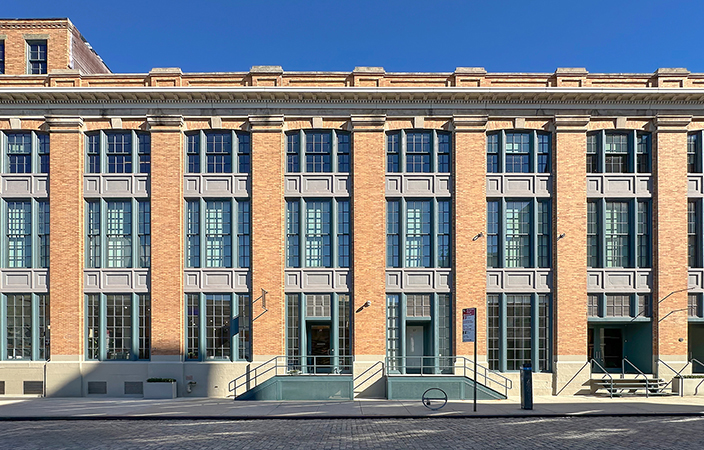Primary market real estate investing: Gaining comfort and understanding the value of land - by Michael Zysman

City Bay Capital LLC
When looking at primary real estate markets such as New York City and San Francisco, investors with limited experience in these markets usually comment on their inability to get comfortable with the low capitalization rates relative to secondary or tertiary markets. The main reason for this dichotomy in capitalization rates is due to the value of the land relative to the total value of the real estate, and a real estate investor looking to gain a comfort with primary markets needs to fully understand the factors that influence the value of land. A real estate investor looking to gain a comfort level with primary markets needs to fully understand the factors that influence the value of land. Primary markets generally have advanced infrastructure which includes some or all of the following items: Well-developed public transportation systems, high quality utility processing and delivery systems, advanced cultural institutions, top educational institutions and hospitals, large airports, social services, diversified economies, evolved common law legal systems, effective public safety institutions, a rich documented history, highly thought-out urban plans, and/or physical geographic boundaries or attractions. Building this level of infrastructure takes a substantial amount of capital investment and time, which makes the market’s land a rare and valuable commodity. Having this level of infrastructure leads to the creation of advanced societies that will attract highly educated populations and businesses that demand their labor.
Confident investors in primary markets put a greater emphasis on the future value of the real estate’s underlying land, versus primarily focusing on the cash flow from the existing physical structure that has been built on the land. Continued maintenance and investment in infrastructure will lead to higher demand from people and businesses to be in these markets, which leads to increased rent growth, and the eventual economic feasibility to demolish and increase the physical size of the buildings on the land. In addition, secondary markets that substantially invest in their infrastructure will see decreases in their market’s average capitalization rate since the value of the underlying land and its future potential has increased. Secondary markets that continue to make these investments can eventually evolve into primary markets. This phenomenon is happening in secondary markets such as Nashville, Denver, Seattle, and others. Conversely, if markets do not invest and maintain their infrastructure, the value of the land will decrease since the markets will no longer be able to efficiently manage the population densities. This is evidenced in many of the “Rust Belt” markets that have not recovered due to their lack of investment in infrastructure.
Buildings are a depreciating asset that will continue to decrease in value over time unless there is substantial rehabilitation to the building on a consistent basis. Most people can walk into a 30-year-old building that has not been maintained and view it as undesirable. This is further evidenced by the U.S. Tax Code’s rule that residential buildings are depreciated over 27.5 years, commercial buildings are depreciated over 39 years, capital improvements to properties create new depreciation schedules, and land cannot be depreciated. In many tertiary markets, real estate values are mostly dictated by the quality of the buildings that exist on the land, since limited value is given to land due to the lack of irreplaceable infrastructure investment. Investors who do not maintain their buildings in these markets will see the value of the buildings and their rent rolls decrease over time if you factor-out inflation. Newer properties can be built on land close by, and the land the building is on has a limited competitive advantage since its infrastructure can be easily replicated, and tenants who are able to pay higher rents will most likely move into the newer buildings. In addition, new building systems can be invented and/or a population’s taste for different floor plans can be in demand that an older building cannot accommodate regardless of the level of renovation; this will further decrease the building’s competitiveness and value. In contrast, primary market investors who buy poorly maintained buildings and continue to poorly maintain them, may see continued rent growth and value increases since there are tenants willing to sacrifice building quality in exchange for the convenience of high-quality infrastructure that continues to improve overtime. In addition, capitalization rates can compress further if an investor owns a poorly maintained building where improved market infrastructure makes it economically feasible to demolition and build a larger building, since there will be increased investment demand from developers.
In conclusion, gaining comfort to invest in primary markets with low cap rates requires an appreciation for the difficulty of reproducing the market’s infrastructure, and a comfort that the market’s infrastructure will continue to be maintained and improved. From an absolute point of view, an investor that relies solely on physical building value for their investment thesis and can afford to maintain their building, has a lot of control over the ultimate outcome of their real estate investment. Whereas an investor that relies solely on speculative increases in land value as an investment thesis, needs to have trust that the municipality will make good decisions regarding the market’s maintenance and improvement of its infrastructure.
Michael Zysman is a managing principal at City Bay Capital LLC, New York, N.Y.
SABRE coordinates sale of six properties totaling 199,845 s/f


Behind the post: Why reels, stories, and shorts work for CRE (and how to use them) - by Kimberly Zar Bloorian

Strategic pause - by Shallini Mehra and Chirag Doshi

Lower interest rates and more loan restructuring can help negate any negative trending of NOI on some CRE projects - by Michael Zysman








.jpg)

.gif)